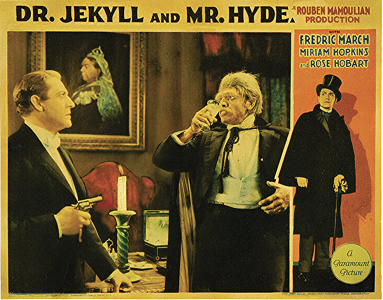Last night I saw for the very first time Rouben Mamoulian‘s Dr. Jekyl and Mr. Hyde (’31). I had watched two or three segments (particularly the Miriam Hopkins stocking-removal + side-boob scene) but never the entire thing.
It was a beautifully restored version showing on the Criterion Channel, but I was doubly impressed and actually astonished by the extended POV sequence in the very beginning, which I had somehow never read about.

It was almost certainly Mamoulian’s idea to begin with, I’m guessing, but the renowned cinematographer Karl Struss (Sunrise, The Great Dictator, Limelight) was obviously a full partner. The shot uses a circular, partially-closed iris view, and it starts with Fredric March‘s unseen Dr. Jekyll playing an organ, talking to his butler, walking through his home, putting on an evening cape, leaving his home (we finally get a peek at March when he looks in a mirror) and arriving as a college classroom for a lecture.
If before last night you had asked me what film was the first to make use of extended POV cinematography, I would have said Robert Motgomery‘s Lady in the Lake (’47), a hardboiled Phillip Marlowe crime story.













